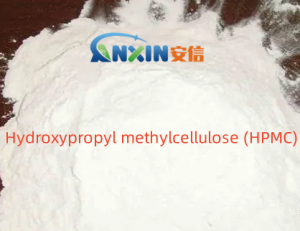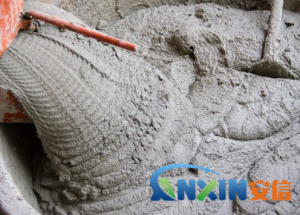Mortar is one of the most commonly used building blocks in modern construction. Its workability and final quality directly impact the durability and aesthetics of a building project. Adding hydroxypropyl methylcellulose (HPMC) to mortar formulations has become an industry standard. As a high-performance, water-soluble polymer, HPMC plays multiple roles in mortar, including thickening, water retention, and improving workability. It is an indispensable additive for enhancing mortar’s overall performance.
1. Main Functions of HPMC in Mortar
1.1. Significantly Improved Water Retention
During mortar construction, rapid water evaporation or absorption by the base layer can lead to incomplete cement hydration, resulting in cracking and insufficient strength. HPMC molecules form a stable polymer film in the mortar, effectively locking in water, slowing water loss and ensuring full cement hydration. This excellent water retention is particularly important when working with high temperatures, low humidity, or highly absorbent base layers.
1.2. Improved Workability and Flowability
HPMC has excellent lubricating properties, making mortar smoother, easier to mix, and easier to spread. It imparts a moderate consistency and thixotropy to the mortar, meaning it maintains a stable shape when still and flows freely when agitated. This significantly improves the feel of the mortar, reduces construction difficulty, and increases efficiency.
1.3. Extended Open Time and Adjusted Setting Speed
In hot or dry conditions, the mortar surface tends to lose water too quickly, making it difficult to apply or level. HPMC slows down the evaporation of moisture in the mortar, thereby extending the open time during application and allowing workers more time to adjust, thus avoiding uneven joints and uneven surfaces. It also regulates the setting process, ensuring a more uniform and stable hardening of the mortar.
1.4. Improved Adhesion and Anti-Slip Properties
HPMC forms a network structure within the cement paste, enhancing the interfacial adhesion between the mortar and the substrate. For systems such as tile adhesives, thermal insulation mortars, and plaster mortars, the addition of HPMC effectively prevents slippage, improves adhesion, and ensures long-term stability.
1.5. Enhanced Shape Retention and Sagging Resistance
During construction on facades or ceilings, mortars are prone to sagging or sag. HPMC significantly enhances sag resistance by increasing the mortar’s yield stress and thixotropic properties, allowing it to maintain its proper shape during construction, preventing sagging and ensuring uniform application thickness.
2. HPMC Dosage and Performance Impact
HPMC is generally used in small amounts, typically comprising 0.1% to 0.5% of the mortar’s mass, but its impact is significant. Too little can lead to insufficient water retention and bonding properties, while too much can delay setting or reduce strength. Therefore, the type and dosage of mortar should be appropriately selected based on the mortar type (e.g., plaster mortar, tile adhesive, thermal insulation mortar, self-leveling mortar, etc.) and the construction environment. HPMC with varying degrees of substitution and viscosity has varying effects on mortar performance: high-viscosity varieties offer better water retention, while low-viscosity varieties exhibit enhanced fluidity.
3. The Importance and Development Trends of HPMC
With the increasing adoption of energy-saving and green construction concepts, dry-mix mortar has widely replaced traditional on-site mortar. As a core additive in dry-mix mortar systems, the quality of HPMC directly impacts product performance. High-quality HPMC stabilizes the mortar system, ensuring consistent application and ultimate strength. Currently, specialized HPMC products are available for different applications (such as waterproof mortar, exterior wall insulation systems, and tile adhesives). Through molecular structure manipulation and surface modification, these products achieve more precise performance matching.
HPMC is more than just an additive in mortar formulations; it is a key functional component that determines mortar performance and construction quality. It significantly enhances the overall performance and construction experience of mortars by improving water retention, workability, adhesion, and sag resistance. With the continuous advancement of technology in the construction industry, performance requirements for HPMC are also increasing. High-efficiency, environmentally friendly, and customizable HPMC products will continue to drive the development of higher-quality mortar materials.
Post time: Oct-10-2025

